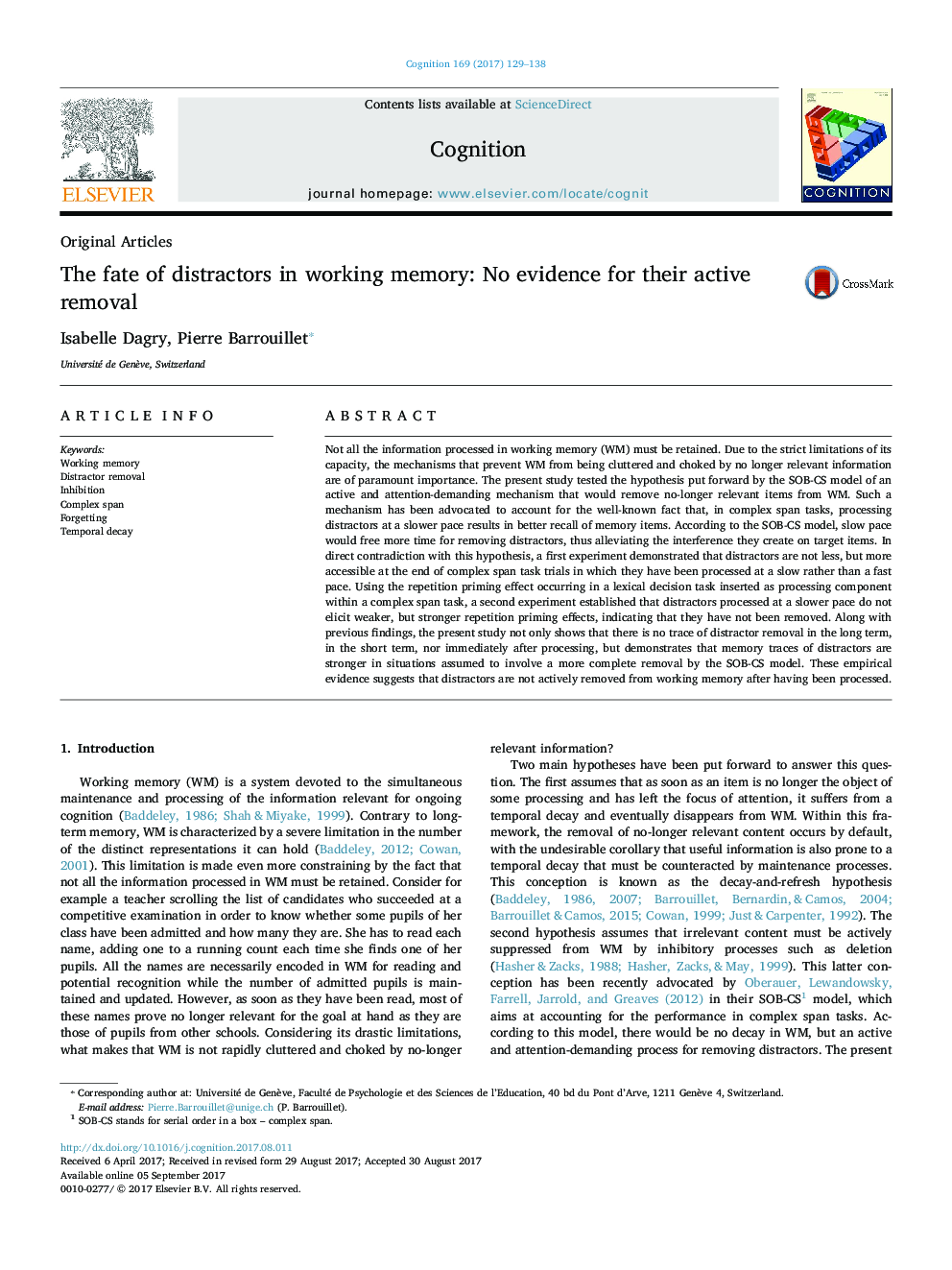| Article ID | Journal | Published Year | Pages | File Type |
|---|---|---|---|---|
| 5041466 | Cognition | 2017 | 10 Pages |
â¢Are distractors in complex span tasks actively deleted from working memory?â¢No trace of such a removal was found when asking participants to recall distractors.â¢Nor immediately after distractors have been processed during the complex span task.â¢Distractors memory traces are even stronger when assumed to have been removed.â¢Distractors do not seem to be actively removed after having been processed.
Not all the information processed in working memory (WM) must be retained. Due to the strict limitations of its capacity, the mechanisms that prevent WM from being cluttered and choked by no longer relevant information are of paramount importance. The present study tested the hypothesis put forward by the SOB-CS model of an active and attention-demanding mechanism that would remove no-longer relevant items from WM. Such a mechanism has been advocated to account for the well-known fact that, in complex span tasks, processing distractors at a slower pace results in better recall of memory items. According to the SOB-CS model, slow pace would free more time for removing distractors, thus alleviating the interference they create on target items. In direct contradiction with this hypothesis, a first experiment demonstrated that distractors are not less, but more accessible at the end of complex span task trials in which they have been processed at a slow rather than a fast pace. Using the repetition priming effect occurring in a lexical decision task inserted as processing component within a complex span task, a second experiment established that distractors processed at a slower pace do not elicit weaker, but stronger repetition priming effects, indicating that they have not been removed. Along with previous findings, the present study not only shows that there is no trace of distractor removal in the long term, in the short term, nor immediately after processing, but demonstrates that memory traces of distractors are stronger in situations assumed to involve a more complete removal by the SOB-CS model. These empirical evidence suggests that distractors are not actively removed from working memory after having been processed.
